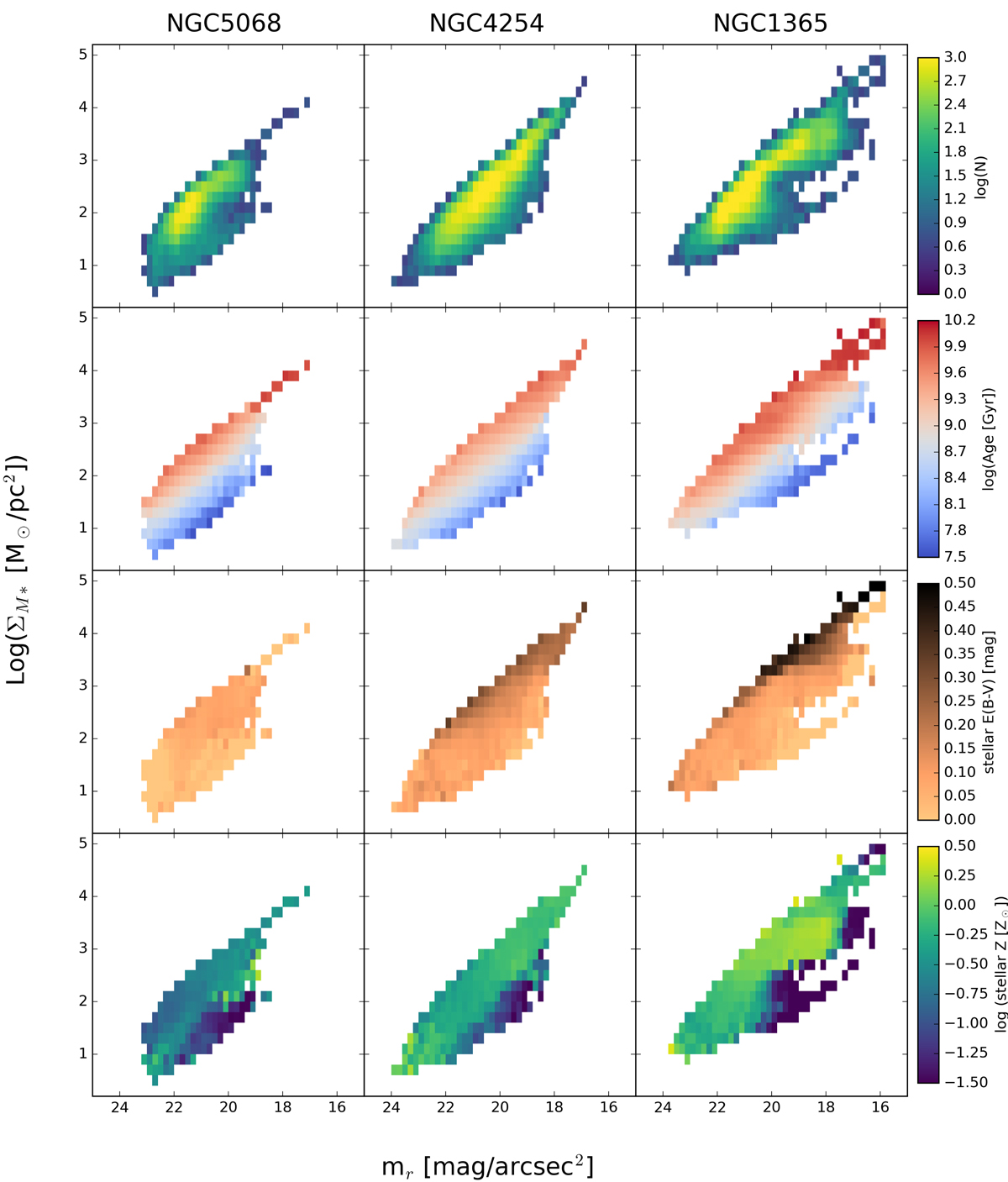Fig. 27.

Download original image
Stellar mass surface density (ΣM⋆) computed from the MUSE spectroscopy as a function of r-band surface brightness (mr) for three representative galaxies (see caption of Fig. 25 and the associated text). All measurements are performed on Voronoi binned regions that reach at least a stellar continuum S/N = 35. For all histograms, bins are required to contain at least three measurements. Top row: binned distribution revealing a clear correlation between mass and light, but with up to an order of magnitude scatter (the colour scale, in log(N), being set up by the point number density). Second row: colouring bins by the median luminosity-weighted stellar age. We demonstrate that the spread is dominated by variations in stellar age. Third row: colouring bins by the median stellar reddening E(B − V) revealing a secondary dependence, reflecting the long known degeneracy between dust extinction and stellar age. Bottom row: colouring bins by the median stellar metallicity illustrating the global scaling with mass as well as additional local variations with both luminosity and stellar mass surface density throughout the disc. We note that very low metallicity values may correspond to an unsolved degeneracy due to bright and very young stellar clusters (see Sect. 6.3.2). As demonstrated in this set of figures, PHANGS-MUSE enables us to infer stellar masses and ages, breaking the long-standing degeneracy between reddening due to dust and reddening due to an ageing stellar population.
Current usage metrics show cumulative count of Article Views (full-text article views including HTML views, PDF and ePub downloads, according to the available data) and Abstracts Views on Vision4Press platform.
Data correspond to usage on the plateform after 2015. The current usage metrics is available 48-96 hours after online publication and is updated daily on week days.
Initial download of the metrics may take a while.


